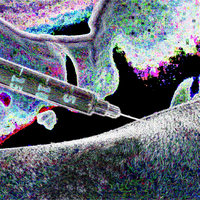| Tyramine | |
|---|---|
| Esters [] | |
|---|---|
| Tyramine acetate | |
| Molecular structure via molpic based on CDK |
| Physical properties [] | |
|---|---|
| Molecular mass | 137.18 g/mol [1] |
| Appearance | CRYSTALS FROM BENZENE OR ALCOHOL [1] |
| Melting point | 164-165 °C [1] |
| Boiling point | 166 °C [1] |
| Solubility | SOL IN WATER /TYRAMINE HYDROCHLORIDE/ [1] |
| Predicted LogP | 1.1 [1] |
| Structural Identifiers [] | |
|---|---|
| Molecular formula | C8H11NO [1] |
| IUPAC name | 4-(2-aminoethyl)phenol [1] |
| SMILES | C1=CC(=CC=C1CCN)O [1] |
| InChI | InChI=1S/C8H11NO/c9-6-5-7-1-3-8(10)4-2-7/h1-4,10H,5-6,9H2 [1] |
| InChIKey | DZGWFCGJZKJUFP-UHFFFAOYSA-N [1] |
Tyramine
Tyramine (also known as 4-Hydroxyphenethylamine, 2-(4-Hydroxyphenyl)ethylamine, Uteramine, Tyrosamine, Tocosine, Tyramin, Systogene, Phenol, 4-(2-aminoethyl)-, 4-Hydroxyphenylethylamine or p-(2-Aminoethyl)phenol) is a neurotransmitter and sympathomimetic substance of the phenethylamine class.
Chemistry
Salts and Esters []
Tyramine is typically found in the form of its hydrochloride salt
or its ester.
Stereochemistry []
Tyramine is a achiral mixture
Subjective effects
See also []
External links []
References []
National Center for Biotechnology Information. PubChem Compound Summary for CID 5610, Tyramine. Accessed June 28, 2025. https://pubchem.ncbi.nlm.nih.gov/compound/5610
U.S. Food and Drug Administration; National Center for Advancing Translational Sciences. Tyramine. UNII: X8ZC7V0OX3. Global Substance Registration System. Accessed June 28, 2025. https://gsrs.ncats.nih.gov/ginas/app/beta/substances/X8ZC7V0OX3
 Anodyne
Anodyne